Leading between Ceres and Calvinia, the R355 is reported to be South Africa’s longest uninterrupted gravel road. For some 250km, it runs more or less dead straight through the stark beauty of the Karoo. Reason enough to detour off the highway? Dirt road lover Johan Heyneke thinks so.
“It was amazing: the scenery, the things you don’t normally see along the highway. And the gravel roads in the Northern Cape are just in a league of their own. I should know, I drive dirt roads every day of my life. The road conditions are exceptional because the farmers maintain them so well.” Johan Heyneke gets lyrical when talking about his detour to drive the longest uninterrupted gravel road in South Africa.
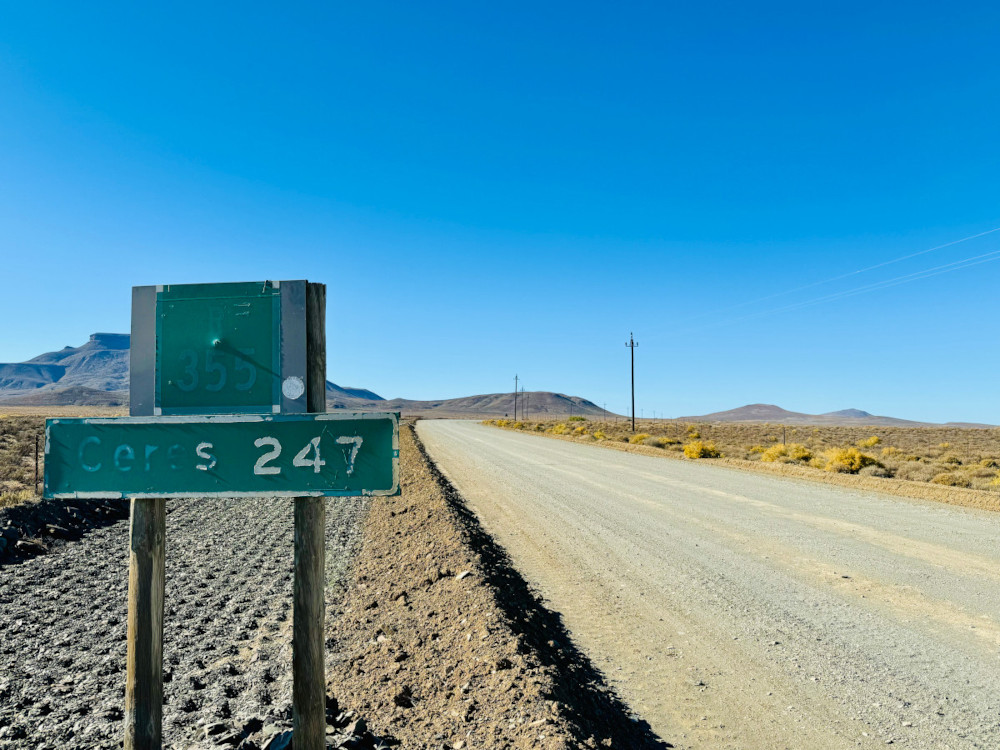
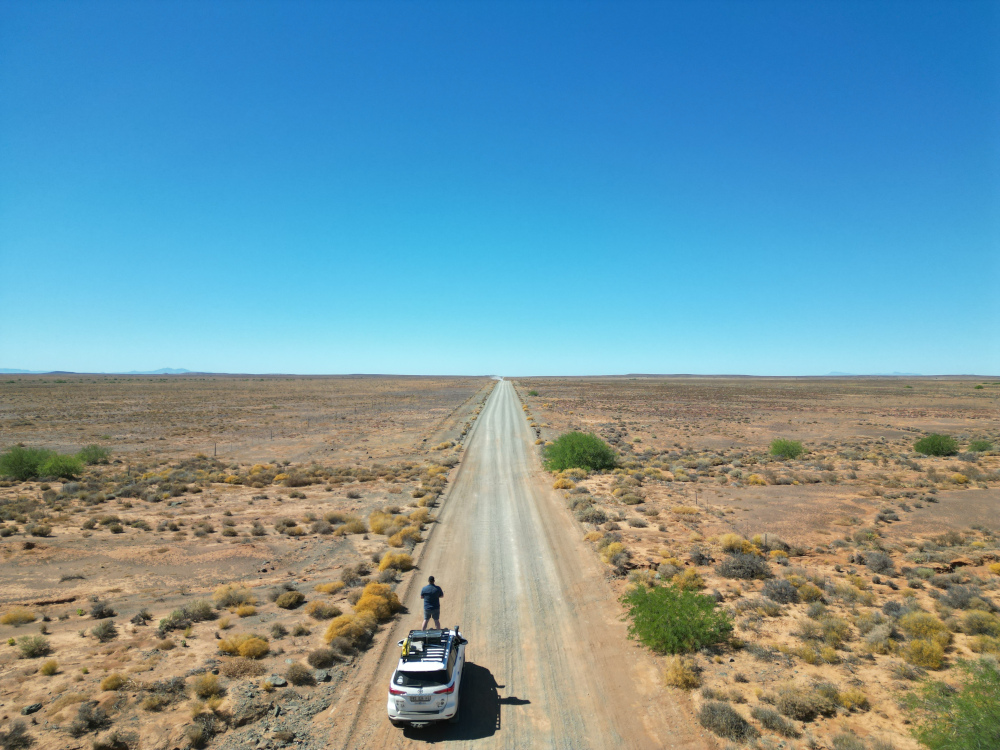
Johan, called Tanne by friends, works in the construction industry and whenever possible he turns off onto gravel. His job means he spends a lot of time on the road so he prefers the openness and quiet of South Africa’s dirt roads. At the end of 2022, he drove from north to south across South Africa following back roads. With his company closing later than usual in 2023, Johan didn’t have as much time for his annual trip to the Cape. But he still decided to turn off from the highway to drive the R355. The stretch between Calvinia and Ceres is acclaimed as South Africa’s longest uninterrupted gravel road.
Also read: Swapping the N1 for back roads
A detour for dirt driving
“I came across the R355 when I was looking at the Tracks4Africa Atlas to plan my 2022 trip. I knew then already that I wanted to drive it,” he says. So in November 2023 he marked it up on the Tracks4Africa online trip planner and started to plan his route. For the first stretch, he used the Rabbit setting – sticking to tar for the fastest route from Polokwane to Kimberley. But from then on it was Tortoise mode so he could maximise gravel travel. Johan named the route “Karoo Ompad”, essentially a detour to drive the Karoo’s famed dirt roads.


“We first hit gravel just outside Kimberley. I wanted to show my mom (travelling along in a Jimny) the confluence of the Orange and Vaal rivers. From Douglas it was dirt roads all the way: Hopetown, Strydenburg, Britstown, Loxton, Fraserburg.” A short section of tar led into Calvinia, the departure point for the country’s longest uninterrupted gravel road.
“For 10-12km at a time on the R355 you can see the road stretching straight ahead of you. There’s the odd kink in the road or maybe a small rise, but then you see it running straight again for another 10km. It reminded me of Namibia and the time I drove from Keetmanshoop to Otjiwarongo. That road is straight for hours on end. If you’re not fully awake and focused, you’re going to fall asleep.
“Fortunately, I’m used to driving long distances. And there’s the fact that you have all this nature around you. You can’t fall asleep, because you might miss something,” says Johan.
Scenes along the R355
Johan had expected the road to be long and straight but he wasn’t prepared for the wild beauty of the surrounds. Raptors perched on fence and telephone poles, scanning the veld for their next meal. Springbok bounded along the road – at one point on the wrong side of the fence. He drove past stone-built sheep kraals and the ruins of farmsteads dating back more than a hundred years.
“About 90% of the time you have a 360 degree view of the landscape all around you. Those heavenly open spaces connect you with the soil. It is mesmerising,” he says.
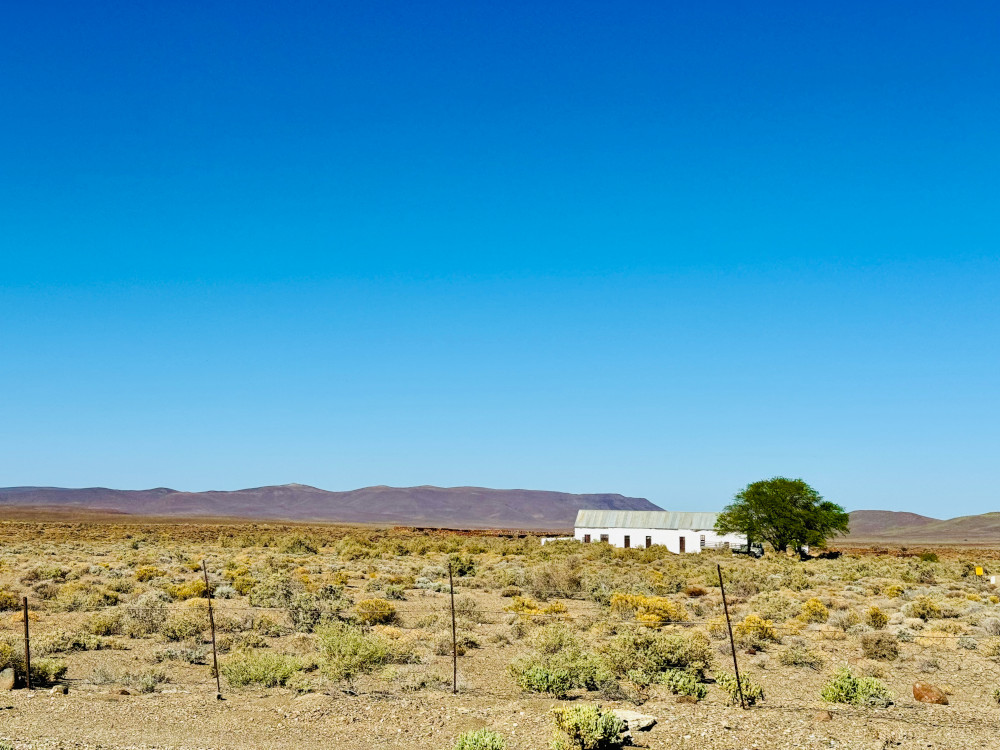

The R355 is known as a tyre-eating road, but when Johan drove it, he found it in great condition. “A low-riding sports car going slowly enough could have driven that road. With a little stone chip damage, of course,” he says. The point is that you don’t need a big rig to drive South Africa’s longest uninterrupted gravel road. It does pay to be prepared, though. Make sure you have a spare tyre (some say two tyres) and pack sealant, puncture patches and a compressor if you can. Slow down at sections where water has washed away some of the surface. Take it slow and steady, so you can enjoy the views.
The appeal of little-used roads
“Only one car passed us on the entire 250km stretch between Calvinia and Ceres. Aside from two farm bakkies that crossed the R355, the only other vehicles we saw were at the Tankwa Padstal,” says Johan.
This Karoo institution is worth a detour in and of itself. Far more than a farm stall, it’s an eatery with a bar, a roadside attraction and a place to refresh. “It’s a beautiful sight tussen niks en nêrens (in the middle of nowhere). They serve the best food and my daughter made a beeline for the swimming pool. Within minutes of arriving, the owner was joking with her and people in the bar were chatting to us.
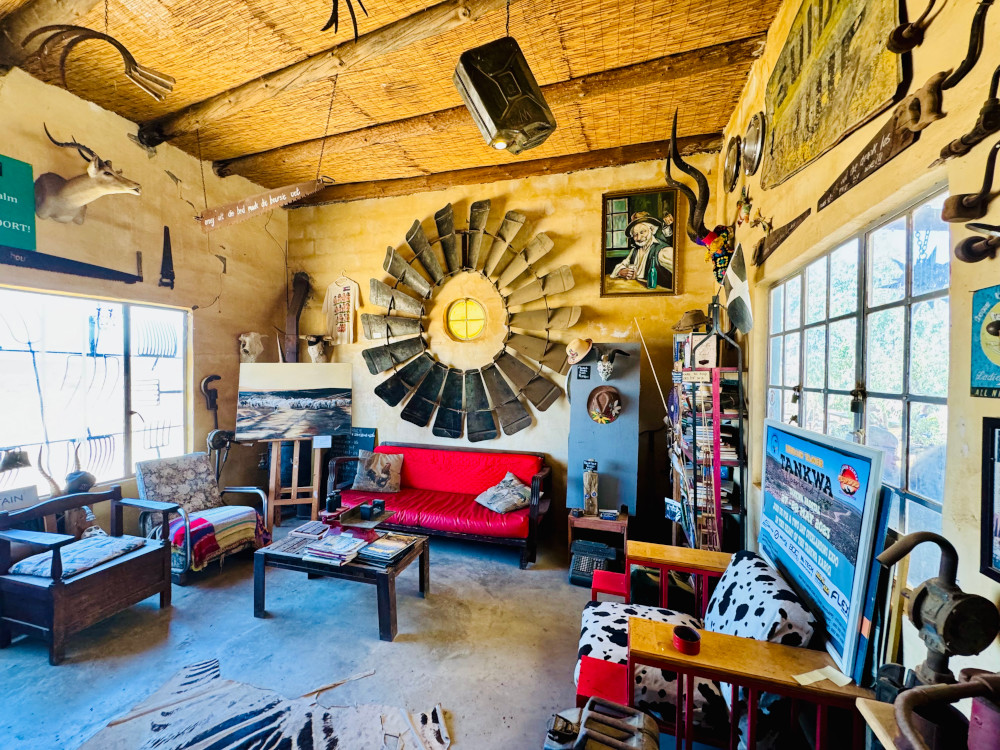
“That’s one of the reasons why I drive dirt roads: to see small towns and meet the locals. The people are so warm and welcoming, you might plan to stop in for 30 minutes and leave six hours later.”
The Tracks4Africa online trip planner is especially useful for anyone looking to explore places off the beaten track. As you build your route, you can see what portion of each stage is on unpaved surface (in distance and time). You can also select specific Points of Interest (POIs), such as food or lodging, to view relevant places in the area. “It makes your trip planning so much easier, because you don’t need to look for a location. It’s already there on the map – you just need to work it into your route.”
Johan is already excited to use the online planner for his next trip. While the destination must still be determined, one thing is sure: it will involve gravel travel.
Johan ‘Tanne’ Heyneke’s tips for gravel travel
- Plan your trip so as not to be in a rush, but take things as they come. (The Tracks4Africa online trip planner shows accurate travelling times for gravel roads.)
- Pack a tyre repair kit and check that your spare tyre is in good condition.
- Make sure you have enough water as well as something to eat in case you break down.
- Stay as far away from tar roads as possible. Travelling on gravel is far more interesting and a lot safer for your blood pressure.
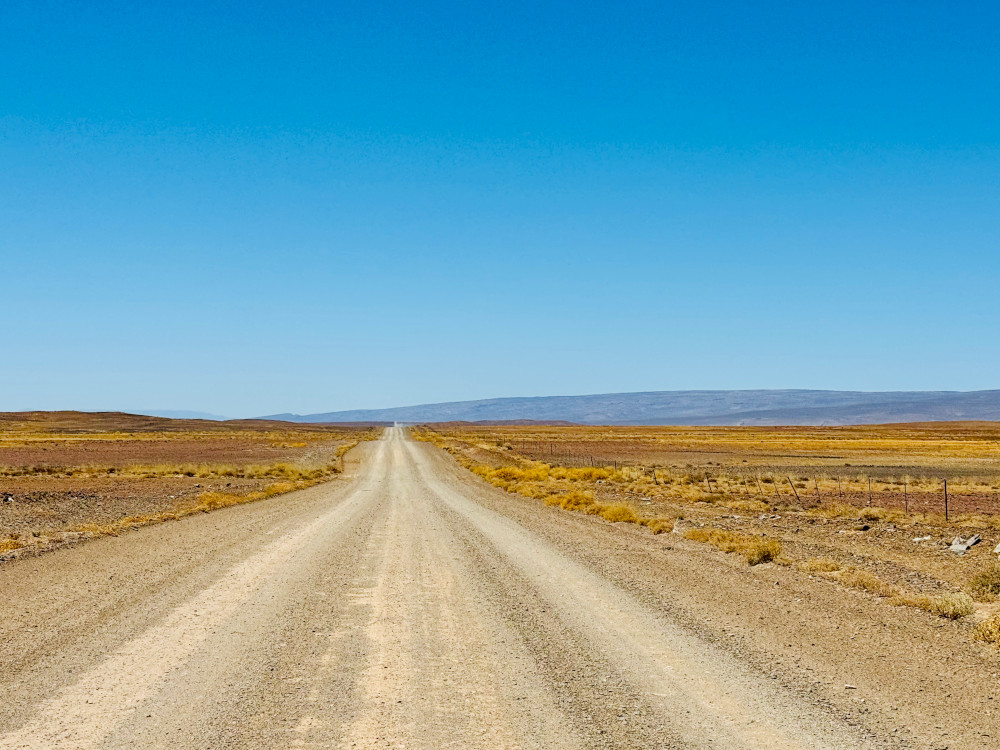
See more of Tanne the Explorer’s gravel adventures on Instagram, Facebook and YouTube.
Tracks4Africa travel tips for the R355
Although your GPS is likely to direct you via the N7 highway, the R355 is the most direct route between Calvinia and the Cape. This also means it is a good option for adventurous types travelling between Upington and Cape Town. The R355 leads through the Tankwa Karoo, a hot spot for adventure biking, so there’s a variety of accommodation. Follow these tips if you plan to drive it:
- Adjust your tyre pressure to improve grip: a useful guideline is to reduce pressure by 20% from what you normally use on tar.
- Ensure you have a full tank before setting off. There’s no fuel to be had between Ceres and Calvinia. Also take note that there’s limited cellphone coverage along the R355.
- Stick to the speed limit. While a gravel road in good condition may tempt you to speed up, this is risky. Because the surface offers less grip, it is easier to lose control. In rain this road can be very slippery and may be closed.
- Bear in mind that the road surface is liable to change as a result of weather and the passing of time.
Also read: How to drive gravel roads
Explore the Tracks4Africa online trip planner in Beta. Our blog about the trip planner has tips on how to get started but take your time to play around. If you have comments about your experience, please email us at newsletter@tracks4africa.co.za.
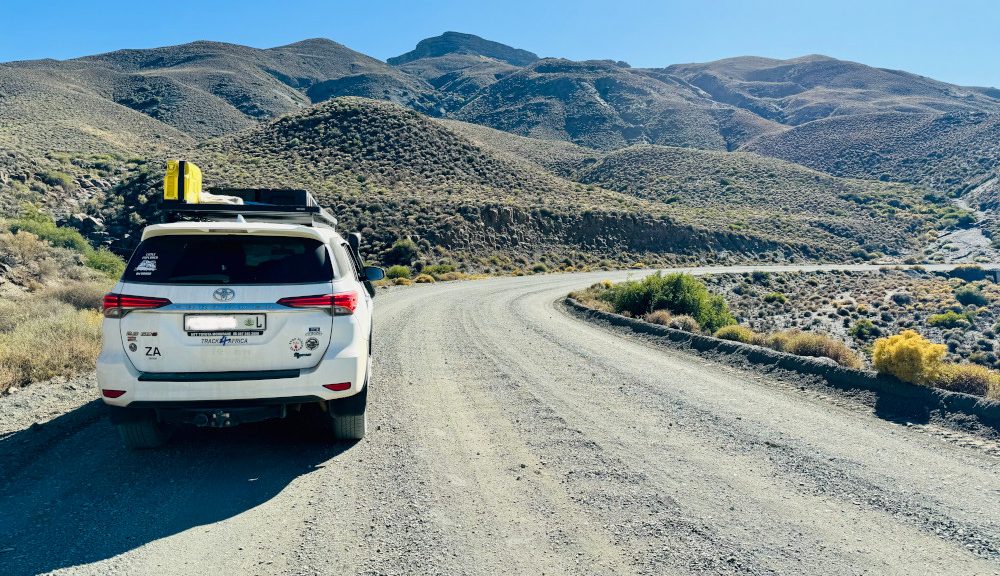

A rather unusual journey
“Detour to drive SA’s longest gravel road”
I like to share with your readers my rather unusual trip on the Ceres-Calvinia road more than 40 years ago.
For the younger readers of your magazine I must explain that during the early 70s we had fuel restrictions as well as speed restrictions imposed on us. Fuel was not available after noon on a Saturday and only available Monday morning at 06:00. Furthermore no fuel was allowed to be carried in a vehicle, not even a small amount of fuel for the lawnmower.
It was during these times that I committed myself to picking up my late mother in law from Calvinia, all the way from Cape Town. As I only had the weekend to carry out the trip I soon realized that the combined distance of roughly 800 km through the Karoo could not be accomplished on one tank of fuel.
At that time I drove a 1964 Citroen ID19, the one with the old “long stroke” engine of 1911cc and 66HP. Having been associated with Citroen since 1964 I knew that this engine was capable….wait for it, running on a mixture of petrol and power paraffin, the green liquid we used to clean dirty engine parts with.
As power paraffin is far less volatile than petrol, having an octane rating of roughly 65 compared to that of petrol’s 93 at that time, the mixture should not exceed 40%.
Having obtained a 25 liter container, I added 1 liter of SAE30 engine oil and filled it with power paraffin. The oil was just a precaution as power paraffin is rather abrasive.
Saturday morning 09:00 I left Cape Town and reached Ceres well in time to fill up the 65 liter fuel tank before 12:00
After driving 100 km on that magnificent “gravel highway” it was time to add the first amount of 10 liter power paraffin to the fuel. Two “modifications” had to be made at that point. The main jet on the Solex 34 PBIC carburetor had to be changed from a 137.5 to a 145 size which was as easy as counting to 10. The second change was a slight adjustment to the timing. This again was made easy as the Citroen had a rotary knob on the dashboard by which one could adjust the timing in both directions. A slight turn on the knob to the left and I retarded the timing by 3 degrees. No adverse effect was noted on the performance, no “pinking” as the compression of the motor was a low 7.5:1
I do remember driving past the small settlement of De Bos with farm children waving, perhaps in amazement of seeing a sedan on that stretch of road.
Just past the top of the Bloukrans Pass the tank was topped up again with the green liquid. Having arrived in Calvinia just after 16:00 it was now a matter of keeping the engine warm in order for the engine to start without problems due to the fuel, paraffin mixture. Every half hour I started the Citroen and finally set of just before sunset on the return journey to Cape Town. By now the 65 liter tank was almost full again and surely would take us home.
For those travelers fortunate enough to have travelled the R355 during the day, the trip at night is equally fascinating. I recall no vehicle used the road that night other than my mother in law, I and the Citroen. We arrived just before midnight in Cape Town with no ill effects on the Citroen, other than a slightly overfilled engine sump.
I have travelled the road many times more during the last 40 years and still harbour found memories of that epic trip, perhaps even imagining smelling the strange petrol-paraffin combination at times.
What a fascinating trip you made! Your mechanical knowledge and clever thinking made it possible. Thanks for sharing this unusual trip with us.